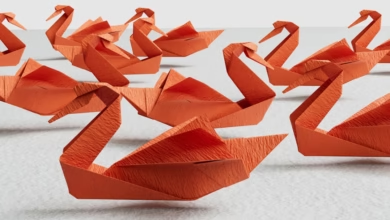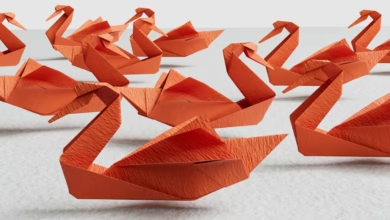Exploring Jewelry Metals: The Crafting, Investing, and Sustainability of Gold, Silver, and Platinum

Jewelry has long been a symbol of beauty, status, and personal expression, with its significance rooted in the choice of metals used in crafting each piece. In the world of jewelry, gold, silver, and platinum reign supreme as the primary jewelry metals, each offering unique properties that contribute to their allure. This article delves into the fascinating realm of jewelry metals, exploring the distinctive characteristics of these precious metals and their roles in both crafting and investment. As we navigate through the intricacies of metallurgy and metal alloys, we will also address the growing importance of sustainable metal production amidst rising concerns about metal mining and environmental impact. Additionally, we will highlight current trends in metal recycling, revealing how the jewelry industry is adapting to embrace eco-friendly practices. Join us on this journey to uncover the multifaceted aspects of jewelry metals, from traditional craftsmanship to modern innovations in metal fabrication, and gain insights into the investment potential of gold, silver, and platinum in today’s market.
- 1. Understanding Jewelry Metals: The Unique Properties of Gold, Silver, and Platinum
- 2. The Role of Precious and Industrial Metals in Jewelry Crafting and Investment
- 3. Sustainable Metal Production in Jewelry: Trends in Recycling and Metallurgy
1. Understanding Jewelry Metals: The Unique Properties of Gold, Silver, and Platinum
When it comes to jewelry crafting, understanding the unique properties of various metals is essential for selecting the right material for each piece. Among the most sought-after choices are gold, silver, and platinum, each of which offers distinct characteristics that cater to different preferences and needs in jewelry design.
Gold is renowned for its malleability and resistance to corrosion, making it a favorite among jewelers. With its attractive luster and warm hue, gold is often alloyed with metals such as copper and zinc to create various shades, including rose and white gold. Gold investing has gained popularity as a means of securing wealth, further emphasizing its status as a precious metal. The durability of gold, coupled with its long-lasting appeal, ensures that it remains a staple in the world of jewelry metals.
Silver, another precious metal, is valued for its high reflectivity and ability to be easily shaped. While it is more affordable than gold and platinum, silver is prone to tarnishing, which can be mitigated through proper care and the use of protective coatings. The versatility of silver makes it a preferred choice for both delicate and robust designs. Additionally, silver investing has become increasingly popular, as it serves not only as a beautiful material for jewelry but also as a solid investment in the metal commodities market.
Platinum, known for its rarity and strength, is often considered the most luxurious of the jewelry metals. Its high resistance to wear and tarnish makes it an excellent choice for engagement rings and other high-end pieces. Platinum is a non-ferrous metal, distinguished from ferrous metals like steel due to its lack of iron content, which contributes to its corrosion resistance. As a result, platinum jewelry requires minimal maintenance, making it ideal for everyday wear.
In the broader context of metallurgy, these precious metals play a significant role in metal fabrication and the creation of metal alloys. Their unique properties lend themselves to various applications beyond jewelry, including aerospace metals and automotive metals. The sustainable metal production movement also highlights the importance of recycling metals, including gold, silver, and platinum, to reduce the environmental impact associated with metal mining and extraction.
In conclusion, understanding the properties of gold, silver, and platinum is crucial for anyone interested in jewelry crafting. These metals not only provide aesthetic appeal but also offer durability and investment potential, making them key players in the world of jewelry and beyond. As trends in metal usage continue to evolve with innovations such as 3D printing metals and the exploration of battery metals like lithium, the landscape of jewelry design is likely to see exciting developments in the future.
2. The Role of Precious and Industrial Metals in Jewelry Crafting and Investment
The jewelry industry has long relied on both precious and industrial metals, each playing a distinct yet complementary role in crafting exquisite pieces and serving as investment vehicles. Precious metals like gold, silver, and platinum are highly sought after not only for their aesthetic appeal but also for their intrinsic value. Gold investing and silver investing have become popular strategies among collectors and investors, driven by the metals' historical stability and ability to retain value over time.
In contrast, industrial metals, including base metals like copper, aluminum, and zinc, contribute to the functionality and durability of jewelry. These non-ferrous metals are often used in metal alloys, enhancing strength and resistance to corrosion, which is crucial for everyday wear. The incorporation of metals such as palladium and platinum in jewelry not only elevates its luxury appeal but also adds resistance to oxidation and other forms of metal corrosion, ensuring longevity.
The interplay between precious and industrial metals extends into the realms of metal recycling and sustainable metal production. As environmental concerns grow, the jewelry industry is increasingly focused on sourcing materials responsibly. This includes utilizing recycled metals in metal fabrication processes, which reduces the need for new metal mining and aligns with eco-friendly practices. Additionally, the rise of 3D printing metals has revolutionized jewelry crafting, allowing for innovative designs while minimizing waste.
Furthermore, the trends in metal commodities are shifting as the demand for rare earth metals and energy metals rises. These materials are becoming essential not only in jewelry but also in technologies related to automotive and aerospace industries. As the market evolves, understanding the significance of metallurgy and the various metal trends will help consumers and investors make informed decisions about their jewelry purchases and investments.
In summary, the role of precious and industrial metals in jewelry crafting is multifaceted, encompassing both aesthetic and functional elements. As gold, silver, and platinum continue to dominate the luxury market, the integration of base and rare earth metals ensures that jewelry remains both beautiful and versatile. Whether for personal adornment or investment purposes, understanding the dynamics of jewelry metals is essential in navigating this ever-evolving landscape.
3. Sustainable Metal Production in Jewelry: Trends in Recycling and Metallurgy
The jewelry industry is witnessing a transformative shift towards sustainable metal production, emphasizing the need for responsible sourcing and innovative practices in metallurgy. As concerns about environmental impact and ethical mining practices grow, jewelers are increasingly turning to metal recycling and the use of recycled precious metals. This trend not only mitigates the adverse effects of metal mining but also supports the circular economy, where precious metals like gold, silver, and platinum can be repurposed to create new jewelry without the need for additional extraction.
One of the most notable advancements in sustainable metal production is the rise of metal recycling. Jewelers are now sourcing recycled materials, which significantly reduces the carbon footprint associated with the extraction of base metals and precious metals. By utilizing metal alloys derived from old jewelry, industrial applications, and electronic waste, the industry can minimize waste and conserve natural resources. This practice is particularly relevant given the scarcity of rare earth metals and the increasing demand for various metal commodities, including those used in energy and automotive sectors.
Furthermore, advancements in metallurgy are leading to the development of innovative techniques for metal fabrication, such as 3D printing metals. This technology not only allows for intricate designs but also reduces material waste during the production process. The integration of 3D printing in jewelry making is indicative of broader metal trends that prioritize sustainability and efficiency.
As consumers become more aware of the implications of their purchases, gold investing and silver investing are increasingly influenced by factors such as ethical sourcing and environmental sustainability. Jewelry brands that commit to sustainable practices are gaining traction among eco-conscious consumers, positioning themselves favorably in a competitive market.
In summary, the focus on sustainable metal production in the jewelry industry is reshaping how precious and industrial metals are sourced and utilized. By embracing metal recycling and innovative metallurgy, the sector is taking significant strides toward a more sustainable future, ensuring that jewelry remains not only a symbol of beauty but also a testament to responsible craftsmanship.
In conclusion, the world of jewelry metals is rich and varied, encompassing not just the precious metals like gold, silver, and platinum, but also a wide array of industrial and base metals. Understanding the unique properties of these metals is essential for both jewelry crafting and investing. As we explored, gold investing and silver investing remain popular due to their historical value and market stability, while platinum offers a luxurious option with its durability and rarity.
Moreover, the trends in sustainable metal production are reshaping the industry. With a growing focus on metal recycling and eco-friendly practices, the jewelry sector is adapting to meet consumer demand for ethically sourced materials. The integration of metallurgy advancements, including 3D printing metals, is further enhancing the design possibilities, making jewelry not only beautiful but also sustainable.
As we move forward, it is crucial to keep an eye on the evolving landscape of metal commodities and the role of various metals—from aerospace to automotive and energy applications. Understanding these trends will empower consumers and jewelers alike to make informed choices about jewelry metals, ensuring they contribute positively to both personal and environmental goals. Whether you are investing in precious metals or exploring innovative metal fabrication techniques, the future of jewelry metals is poised for exciting developments that blend tradition with sustainability.





